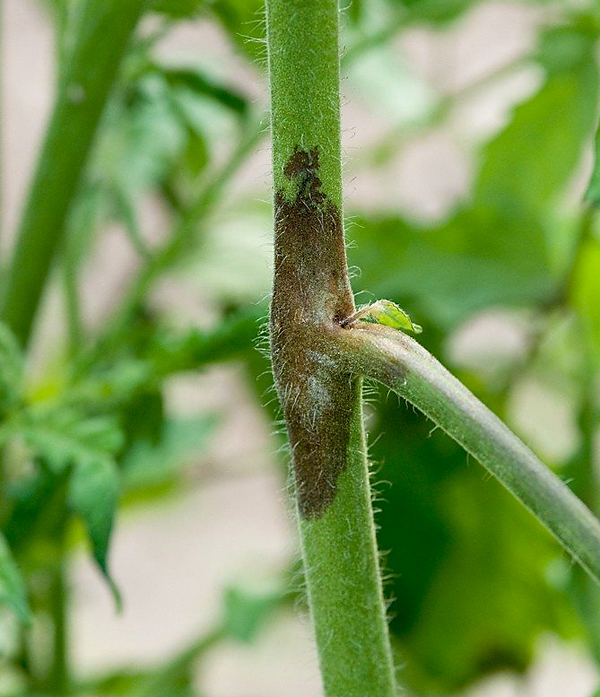
Chapter 43
Summary
The procedures for growing a big tomato, or for that matter any tomato at all, should be fairly clear now. Most of the growing techniques that have been outlined to this point pertain to growing a healthy tomato. Where the real differences exist between simply growing a tomato to eat, and growing a really big tomato, focus on selecting a tomato variety that will grow big, and using watering, fertilizing, and pruning techniques as suggested. Several of the growers use techniques which vary, but are surprisingly similar. You will have to experiment and choose what works in your garden, and what gives you the most success. Also, you cannot forget the search for the megabloom, as this surely is the secret to growing really big. All of the record tomatoes of the past have been the result of fused blossoms including those of Gordon Graham, Clarence Dailey, and Minnie Zaccaria. When you find a MB, give it some additional pollen, treat it as recommended, and the only other thing you will need is a little luck.

The growing season for giant tomato growers begins in the fall with soil preparation as discussed in Chapter 4. All giant tomato growers agree that the addition of organic material to the garden soil is a must. Most do this in the fall after the garden has been cleaned up and all plant debris removed. Growers add compost, manure, or both to their gardens, depending on what is available, and mix it into their soil using a tiller or by hand. You may review making compost in Chapter 24, and if you are not already doing so, consider building a compost pile. Further preparation of the soil is accomplished in the spring just prior to transplanting your tomatoes in the garden. This usually involves preparing the actual planting site with additional compost or manure, and perhaps a small amount of granular or water soluble fertilizer.

Usually, seed selection takes place during the winter months. Seeds may be purchased, obtained from other growers, or selected from the saved seeds of tomatoes grown in past seasons. Big Zac, Domingo, Brutus Magnum, Megamarv and Delicious are some of the most commonly grown tomato varieties used by giant tomato growers, but there may be other varieties as good or better awaiting discovery by you. Seed selection is discussed in Chapter 3.

Starting your seeds is considered in Chapter 3. If you want a mature tomato on a certain date, timing becomes important. Most giant tomato growers try to develop a healthy plant that is timed to produce big blossoms on a date that will give them a mature tomato on the day of the event they are growing for. This means the tomato must be set around 70 days prior to the event with the weather being a major factor in determining the actual maturity date.
Germination of seeds is reviewed in Chapter 6 along with some of the techniques used by various growers. Every technique requires the presence of warmth and moisture and there are many ways to provide these. The ideal temperature falls somewhere between 70˚ and 80˚, and most favorable at closer to 80˚.
Taking your seedlings to the transplant stage is discussed in Chapter 9. The seedlings must be provided an environment in which they can thrive. Initially they will require some artificial light with fluorescent lighting being the most often used source. They also need warmth, moisture, and room to grow. Water soluble fertilizers such as a fish/seaweed mixture, or something such as Miracle Gro 15-30-15, are used sparingly at this stage. They should be used in a dilute form. A commercially prepared growing mix of peat moss, perlite, and vermiculite, to which little or no fertilizer has been added, is the most commonly used growing medium. It is important that the growing medium be kept moist but not wet. Pots with good drainage and a system that allows bottom watering work best. One of the best ways to determine the need for water is lifting the pot to see how heavy it is. Chapter 8 discusses how to harden off your plants before taking them permanently outside.

Chapter 9 reviews various transplanting techniques. Some growers put their plants deep in the soil while others lay them on their sides. Chapter 10 discusses how to protect your plants once they are exposed to the outside elements. This protection is especially important for locations that are windy and cold, or hot with bright sunlight, or particularly early season transplants.

Pruning is discussed in Chapter 13 and is one of the major differences between growing tomatoes to eat and growing tomatoes for size. Most giant tomato growers allow only one or two main vines to develop below the tomato and prune off all other secondary vines. Tomatoes usually set from two to four feet above the ground. The number of tomatoes per plant begins with four to six and is reduced to one if there is a big tomato present on the vine. The growing tips of the plants are terminated by most growers at the 3 to 5 foot level. Once the tomatoes of choice are set, all new blossoms are pruned off. Little or no new growth is allowed on the plant during the last month of the tomato's growth, so that all energy is directed into that one big tomato.

Staking and supporting your tomato plants is described in Chapter 14. Most growers use 8 foot long wooden stakes, rebar, or pipes buried one to two feet in the ground to support their plants. If they are available, metal pipes or rebar are best. These along with large cages made of concrete reinforcement wire seem to work best for me. Tomato ties can be made from a multitude of materials. Torn pieces of cloth or old panty hose are the most widely used but may be a bit more difficult to work with. Be certain that you are attentive to supporting your biggest tomatoes, else they will tear away from the vine and all will be for naught.

Chapter 16 goes over several methods of fertilizing your plants. The trend in growing giant tomatoes seems to be moving in the direction of being as organic as possible, though the use of some water soluble and granular fertilizers is difficult to avoid. Develop a plan you are comfortable with, but if you are not meeting with the success you desire, be flexible.
Chapter 17 covers watering. The amount of water your tomato plants will require depends mightily on your soil type and the weather. Get to know your soil and consider using the Gordon Graham method of sticking your finger into the soil to test the water content. The important concept to remember is to maintain the moisture level of your soil as constant as possible, and keep your soil moist but not wet. You will have to work at this. The use of a moisture meter might help. Chapter 11 discusses mulching which, though important for many other reasons, is one way to reduce the amount of watering necessary.

Chapter 21 briefly reviews tomato disease management with an emphasis on prevention rather than treatment. Keep a close eye on your plants and if you see a problem, respond to it. Fungal infestations can be prevented by removing deteriorating leaves and leaves that are touching the ground. Mulching helps to prevent rain from splashing water and soil directly onto your plants. The use of a milk spray to prevent fungus works by altering the pH on the surface of plant leaves. Where I grow Late Blight is such a problem that treating preventively for fungus all through the season is a necessity. Preventive gardening practices cannot be overemphasized, and be certain to remove all organic debris and weeds from your garden at the end of the growing season.
If your tomato matures ahead of schedule due to variations in the weather or a mistake made in timing, Chapter 20 explains how you might prolong your tomato's health, at least for a short period of time. You can keep a tomato fairly stable for 3 weeks in a refrigerator at 50˚.

And lastly, do not forget the search for the megabloom, the secret to growing a monster tomato discussed in Chapter 12. A double blossom can result in a 3 to 4 pound tomato, a triple blossom a 4 to 5 pounder, a quadruple blossom a 5 to 6 pounder, and a blossom made up of five fused blossoms a 7 to 8 pounder. All the really huge tomatoes grown through history have come from fused blossoms. Winning tomatoes are huge and usually ugly, but this is not a beauty contest; it's all about weight. Review the pictures of some of the winning tomatoes and you will see this is so. When you find a megabloom, opportunity is knocking. Be certain your MB receives extra pollen. Support the tomato properly as it grows so it does not pull away from the main vine. Protect it from the sun if necessary, and hope for some good luck.
See you at a weigh-off.

